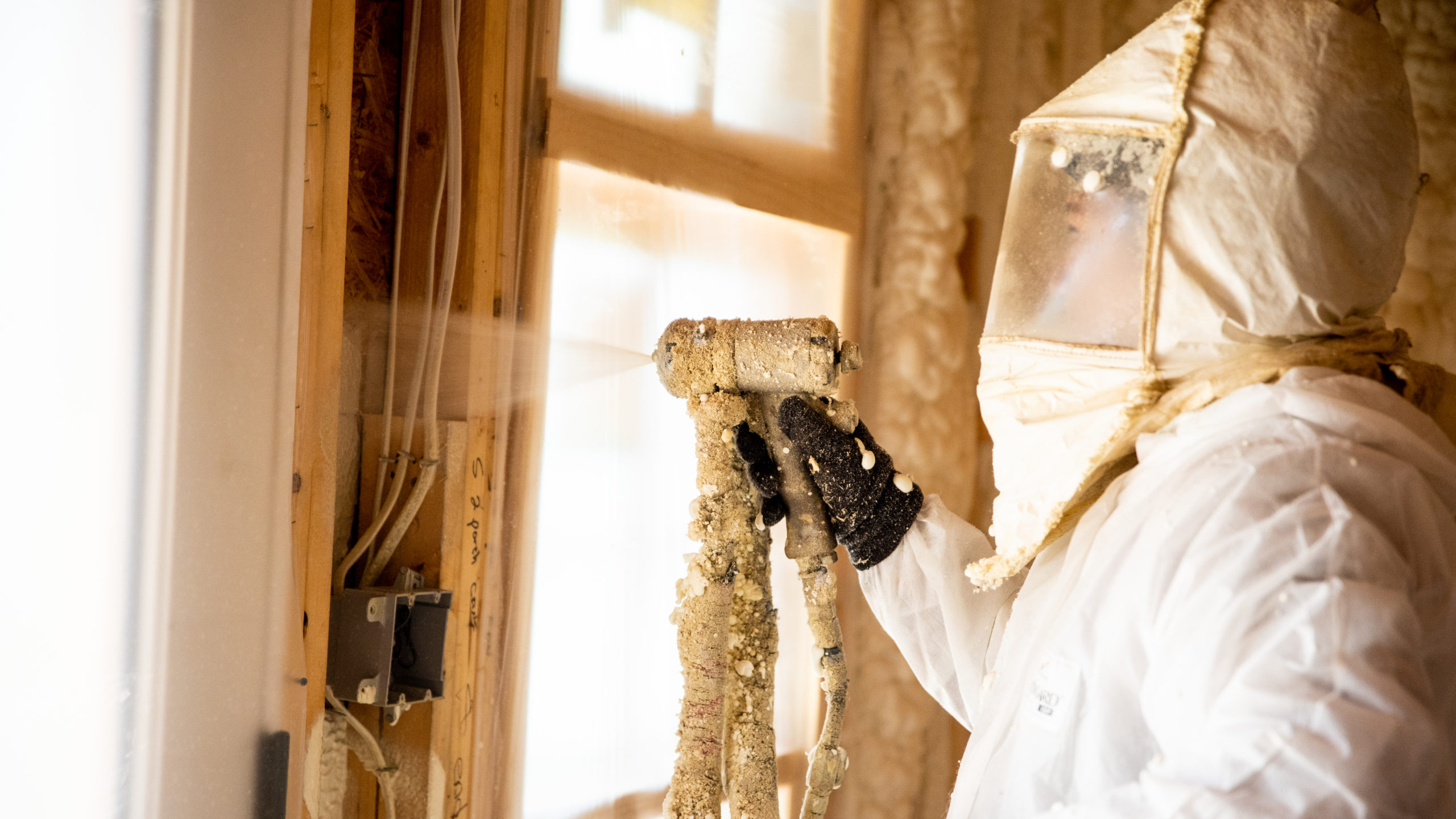Spray foam is one of the most popular types of insulation for commercial and residential properties. Spray foam insulation offers a range of benefits for contractors, developers, and building and business owners—still, there are certain challenges for contractors to overcome to deliver the best outcomes.
In this article, we’ll cover the essentials, including best practice guidelines, types of spray foam, and tips to help you get started as a spray foam contractor.

Dos and Don’ts: Best Practice Guidelines
Every contractor should strive for the best possible results. Following best practice guidelines is important to lower risks, enhance safety, and optimize quality. Here are some simple dos and don’ts contractors should be aware of:
Do:
- Ensure that you have the relevant protective clothing and equipment: Before starting any spray foam insulation job, it’s essential to make sure that you have the required PPE. You should have high-quality equipment that is in good repair, including gloves, a full-face respirator, and a protective suit.
- Assess the environment in advance: Spray foam contractors work on jobs and projects in a range of different environments. Changes in conditions, the building materials used, the climate, and the type of building can help you decide which spray foam to use.
- Prepare the workplace and test the foam: Before you start spraying, it’s essential to prepare the workplace and test the foam. Anyone who does not have protective equipment should vacate the building, and it should also be well-ventilated.
Don’t:
- Start spraying without understanding the product application requirements: Knowing each product’s guidelines is the key to choosing the right type of spray foam for each job. Each job has different goals, and using the right foam to achieve those goals is how contractors succeed.
- Start spraying without assessing the environment: Certain environmental conditions can pose risks and challenges for contractors. For example, if you are working in very hot, cold, or humid conditions, you will need to ensure that it is safe to start the job with the products used. Contractors should monitor conditions and adapt the way they work accordingly. If the environment is more challenging, this may require adjustments to spray techniques, application, or the choice of substrate.
Types of Spray Foam
There are two basic types of spray foam: Open-cell and Closed-cell spray foam. Open-cell spray foam comprises cells that are not fully closed to provide flexibility. Closed-cell foam is made up of completely closed cells to provide enhanced stability.
- Accufoam OC is ideally suited to new constructions and retrofit insulation for commercial and residential premises. It offers a powerful, strong barrier against air and heat transfer and can be used for interior walls, floors, vented and unvented attics, ceilings, and crawl spaces.
- Accufoam CC is more rigid and stable, making it suitable for a wide range of applications, including industrial, commercial, and residential insulation. Accufoam CC can be applied to wood, concrete, masonry, and metal.
Catering to Environmental Conditions
Spray foam insulation will work in almost any environment. Accufoam caters to all conditions, including humid, hot, and cold environments and buildings that are exposed to significant seasonal variations and extreme weather.
When working in cold or hot weather or humid environments, it’s crucial to follow best practice guidelines and to adjust operations and processes to lower risks. If you are applying spray foam insulation in cold, hot, or humid weather, here are some tips to overcome additional challenges:
- Check the product storage temperature
- Use products that are geared towards specific conditions, for example, Accufoam Polar Grade for cold weather and Accufoam Summer Grade for hot temperatures
- Carry thermometers with you to check ambient temperature and monitor the temperature of storage facilities and drums (you can do this by using a laser thermometer)
- Monitor moisture levels closely: the moisture content of the substrate should not exceed 19%.
- Make sure you are familiar with the application requirements for each product
Getting Started as a Spray Foam Contractor
If you want to pursue a successful career as a spray foam contractor, why not learn more about the Accufoam Contractor Partner (ACP) program? The ACP offers free membership and a host of benefits, including:
- High-level training from industry experts
- Referrals and leads in your local area
- Exclusive discounts for software and tools
- Responsive support
- Access to resources, tools, and advice to help you build and grow your business
Learn more about becoming an Accufoam Contractor Partner here.
Spray foam insulation offers various benefits for customers but some challenges for contractors to overcome. To achieve the best outcomes, spray foam contractors should follow best practice guidelines and learn how to optimize quality and safety in different environments. This guide to spray foam insulation is designed to highlight dos and don’ts and help contractors hone their skills while working safely and efficiently.
To learn more about the spray foam industry, check out our article:


